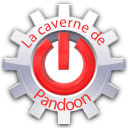
To secure its data, there are different ways that we talked on this site.
One of the ways mentioned, it is the use of the RAID for “Redundant Array of Independent Disks” or in french “Redundant to independent disks together” or roughly translated and simplified “method that uses a set of hard disks to improve size, performance and data security”!
Who said together, said many. And who says several, says need space!
In the desktop towers, you usually put 2 hard disks for computers from leading brands. If you have a case that you bought yourself, we get easily up to 4 If you put SSDS. Put 4 large drives is feasible, but there is relatively little case designed for this.
This is therefore a hard drive Bay who will handle the RAID for 4 hard drives: the ORICO 9548RU3!

Features
- Supports 4 hard drives maximum 8TB and 3.5-inch SATA
- Physical RAID switch at the back
- Software Raid Manager
- RAID 0/1/3/5/10/handset / without RAID
- “Tool free”: requires no tools in particular, installation ease in seconds
- “Plug and play”: no driver installation necessary
- Support aluminum for strength and an effective heat removal
- Safety lock: prevents the involuntary displacement of hard drives
- Auto standby
- Use of USB 3.0 for a speed of up to 5 Gbps, compatible USB 2.0/1.1
- Compatible Windows XP, Windows Vista, Windows 7, Windows 8, Windows 8.1, Windows 10, 32 or 64 Bit and Mac OS 9.1 and more

The test
Of a matte black (available in money), this hard disk Bay measures 146 x 230 x 211 mm. Relatively compact size to support 4 hard drives.
Entirely in aluminum, your hard disks are protected from shocks and can cool more efficiently than if it was plastic.

Accessories level, you have the bare minimum: a power adapter with European and English, plug a USB cable 3.1 of type C to type B male, a USB 3.0 cable type B male to A male and 2 keys Hexagon to open or close doors hard drives.

You can insert 4 hard drives… officially! Officially? Yes, because in reality, it can accept up to 5 hard drives!
You have 4 doors for 4 hard drives, but if you look more closely, you have 5 SATA ports! And this port is perfectly operational!


Unfortunately, to use this 5th SATA port, you need to do a bit of tweaking… You can put the 5th hard drive through the 4th door, but to remove it in the future, it will be very complicated. Or then you can take a SATA extension, but the cable must pass through the 4th door which should remain open. Or you can still cut the frame to get a door below the 4th, there is enough room.
How is it that there are 5 operational SATA ports? Well I suspect very strongly that ORICO used the same channels between the ORICO 9548RU3 which has 4 bays and ORICO 9558RU3 that he has 5! And if we compare the chassis are the same size! The version 4-Bay has a ventilation grille at the bottom, while the version 5 Bay includes a door for the 5th hard drive instead of the ventilation Grill!
With version 4 bays, so you have the advantage of aeration compared to version 5 berries!
To open the doors, it’s pretty simple, you just have to pull on the wrist. Wrist that may lock up with a mini hex key.

However I find it unfortunate that the position of the latch is so visible, and with the key inserted, you don’t have that 2 positions (locked or unlocked), so you can exceed the locking or unlocking.
The only indicator of position is a small notch:

What makes that you cannot lock or unlock a drive “blind”.
Removal of hard drives is however, he facilitated thanks to the presence of a rod coming to push the drive outward when you open the door:

For the management of the RAID, you have 2 option: by ORICO HW Raid Manager software, or physically to the rear of the case:

So you have different RAID types available:
- RAID 0
- RAID 1
- RAID 3
- RAID 5
- RAID 10
- RAID handset
- “Clear RAID”, which I will name “Without RAID”
I invite you to read our other article for more details on the RAID: secure your data with a RAID or JBOD system, but I would add here quickly the different RAID supports the ORICO 9548RU3.
RAID 0 (fast mode)
This RAID 0 mode is a common RAID mode. In this mode, the storage data are divided into two parts and stored in two separate discs. Theoretical storage of the HDD mobile enclosure speed is 2 times faster, the actual capacity is equal to 2 times the capacity of the smaller hard disk. The failure of the RAID 0 is that if a hard drive is damaged, the entire RAID data cannot be restored.
RAID 1 (safe mode)
This RAID 1 mode is also a common RAID mode. In this mode, 2 hard disks are mirrored. The actual capacity of the hard drive is equal to the smallest hard drive. The speed of storage is identical to a single hard drive. The particularity of RAID 1 is that if a hard drive is damaged, all data will not be lost, and the defect is that the loss of the hard drive capacity. It adapts to very important data, such as databases or backup of personal data, it is the best storage solution in these cases.
RAID 3
The RAID 3 fashion needs at least 3 hard disks. A hard drive is used to store the data and the correction of errors. When a hard drive is damaged, the lost data can return from the data of the hard disk to rest by an allocation algorithm. Because RAID 3 updates the data scattered around the hard drive, the playback speed is good, but the writing speed is slow.
RAID 5
The RAID 5 mode puts the original and corrected data and scatters in all hard drives (need 3 hard drives at least). In this mode, when you damage a hard drive, simply remove the hard drive and change another HDD of same capacity or more, then the data can be retrieved and rebuild the RAID set. In RAID 5 mode, the written data spread in all hard disks, this means that the read/write action can occur in a hard drive at the same time. RAID 5 uses only one-third of disk space to store data, and therefore provides a good price-performance ratio.
RAID 10
RAID 10 mode is a combination of RAID 0 and RAID 1 modes. It needs 4 hard drives, and the actual capacity of the hard drive is equal to 2 times the capacity of the smallest drive. This mode has the RAID 0 at high speed and secure 1. In this mode, when you damage a hard drive, simply remove the hard drive and change another HDD of same capacity or more, then the data can be retrieved and rebuild the RAID set. This mode is secure and stable, the use of hard disk space is low and the costs are high but 4 hard drives are required to have the capacity of 2 hard drives.
RAID handset
The combined mode combines all hard drives with a large hard drive. The actual capacity of the hard drive is equal to the total of the capacity of hard disks. If 4 hard disks of Tera 3 are used in this mode, it will tell you 12 Tera into your computer. In this mode, the hard disk space usage rate is high, management is convenient, but security is bad and hard drive performance is not improved. When a hard drive is damaged, the remaining data from the hard drive will be lost.
“CLEAR RAID”
I don’t know any equivalent in french, so I’m calling this the “non-RAID” mode mode. It is relatively simple, it is all simply that each hard drive is seen separately. So no advantage of RAID because it’s simply not the RAID.
Conclusion
This is clearly an excellent support for 4 hard drives, in which you can even connect 5 hard drives! Strong and silent, unless you want more exotic RAID, RAIDS the most common and most useful are all represented. And besides, it’s easy to set them up with the switches on the back!

